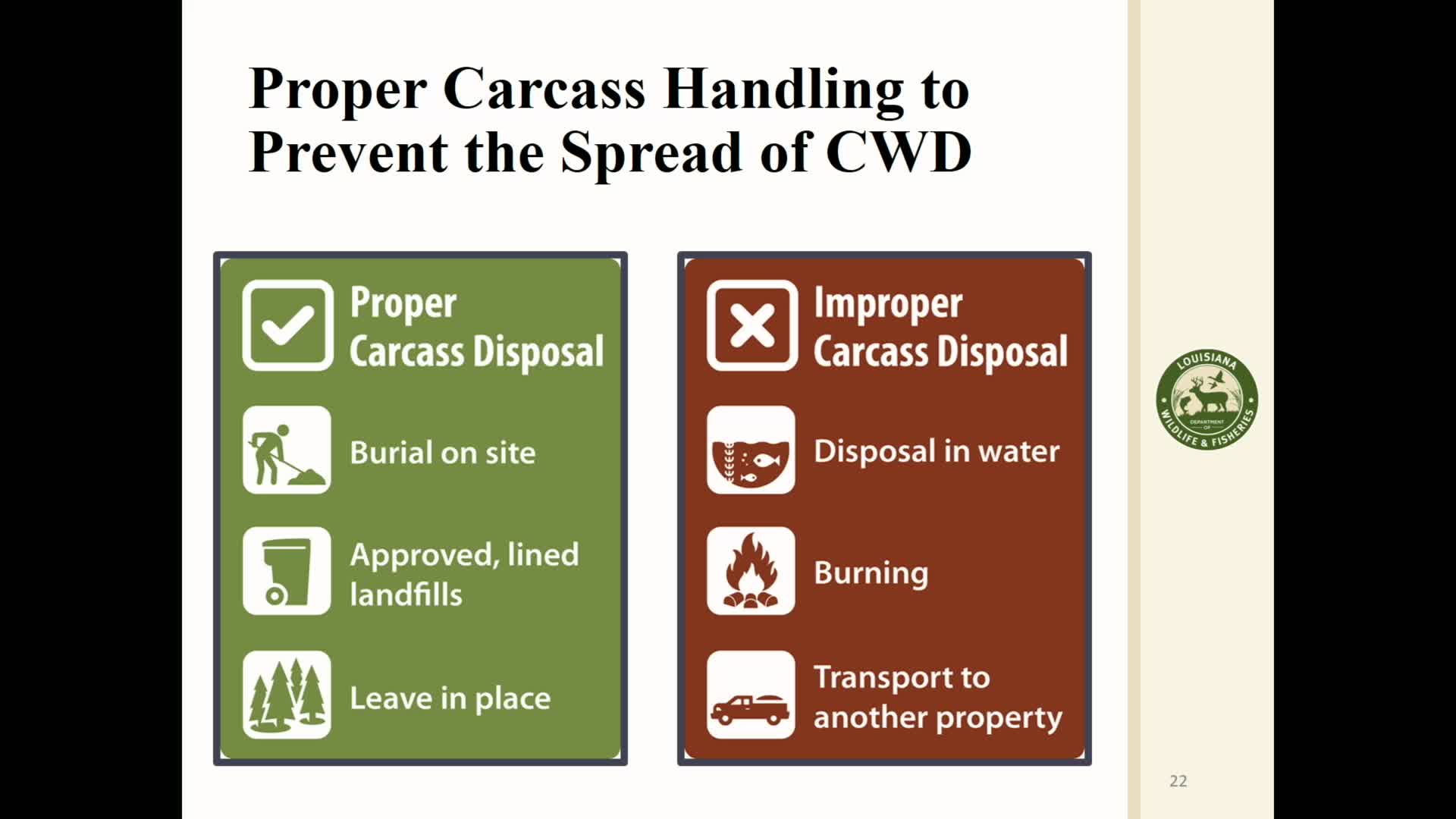Louisiana Wildlife Department Implements New Carcass Management Rules to Combat CWD Spread
September 04, 2025 | 2025 Legislature LA, Louisiana
Thanks to Scribe from Workplace AI , all articles about Louisiana are free for you to enjoy throughout 2025!

This article was created by AI using a video recording of the meeting. It summarizes the key points discussed, but for full details and context, please refer to the video of the full meeting. Link to Full Meeting
One of the primary strategies discussed was the importance of leaving carcass parts in place if they are not going to be processed. This approach aims to minimize the risk of moving potentially infected materials to new areas, which could exacerbate the spread of CWD. With over 200,000 deer harvested annually in Louisiana, the risk of disease transmission increases significantly if carcasses are improperly disposed of. For instance, in Tensas Parish, where CWD has been detected, hunters harvest between 3,000 to 4,000 deer each year, underscoring the need for careful management practices.
The meeting also addressed the legalities surrounding the movement of deer carcass parts. Hunters are permitted to possess and transport certain parts, such as processed meat and deboned meat, as long as specific conditions are met. Notably, the head and backbone must not be attached to the quarters being transported. Additionally, a waiver system has been implemented for taxidermy purposes, allowing hunters to acknowledge the risks associated with moving deer heads for taxidermy while ensuring proper disposal of non-mountable parts.
Early detection of CWD was emphasized as a crucial factor in managing the disease. Officials noted that the initial detection of CWD is often indicative of a larger problem, as the disease can remain undetected until it reaches a critical threshold. A graph presented during the meeting illustrated how CWD prevalence can remain low until it surpasses a 5% infection rate, at which point the risk of exponential growth in cases increases significantly. This highlights the urgency of surveillance and testing to identify and manage outbreaks before they escalate.
The discussions also touched on the challenges faced by various agencies in mitigating the spread of CWD. The Louisiana Department of Wildlife and Fisheries emphasized the need for collaboration among stakeholders to effectively address the disease's impact on wildlife and the environment.
In conclusion, the meeting underscored the ongoing efforts to control CWD in Louisiana through strategic carcass management, legal frameworks for hunters, and the critical need for early detection. As the state continues to navigate the complexities of this disease, the implementation of these measures will be vital in protecting both deer populations and the broader ecosystem. Future steps will likely involve enhanced surveillance and public education to ensure compliance with new regulations and promote responsible hunting practices.
Converted from Chronic Wasting Disease T.F. Sep 4, 2025 meeting on September 04, 2025
Link to Full Meeting
Comments
View full meeting
This article is based on a recent meeting—watch the full video and explore the complete transcript for deeper insights into the discussion.
View full meeting
